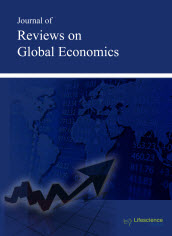jrge
Abstract - Predicting Aggregate and State-Level US House Price Volatility: The Role of Sentiment
|
|
Abstract: This paper examines the predictive ability of housing-related sentiment on housing market volatility for 50 states, District of Columbia, and the aggregate US economy, based on quarterly data covering 1975:3 and 2017:3. Given that existing studies have already shown housing sentiment to predict movements in aggregate and state-level housing returns, we use a k-th order causality-in-quantiles test for our purpose, since this methodology allows us to test for predictability for both housing returns and volatility simultaneously. In addition, this test being a data-driven approach accommodates the existing nonlinearity (as detected by formal tests) between volatility and sentiment, besides providing causality over the entire conditional distribution of (returns and) volatility. Our results show that barring 5 states (Connecticut, Georgia, Indiana, Iowa, and Nebraska), housing sentiment is observed to predict volatility barring the extreme ends of the conditional distribution. As far as returns are concerned, except for California, predictability is observed for all of the remaining 51 cases. Keywords: Housing sentiment, housing market returns and volatility, higher-order nonparametric causality-in-quantiles test, overall and regional US economy. |
Abstract - An Empirical Investigation of the Portuguese Housing Prices (2004-18)
|
|
Abstract: This article presents an integrated macro view of the Portuguese housing market with macroeconomic indicators. Firstly, it compares the housing market and several macroeconomic indicators from 2004 to 2018. Then, the dynamic analysis of the housing prices by different regions in Portugal and its typology included. Also, the article is complemented with the regression analysis to identify the relationship between the house prices and macroeconomic indicators. Keywords: Housing Prices, Housing market, Real estate, Portugal. |
Abstract - The Impact of Food Price Changes and Food Insecurity on Economic Welfare: A Case of Selected Southern African Countries
|
|
Abstract: Households are tremendously affected by changes in food prices. The extent of the impact depends on the income of households. This study is undertaken to analyse the impact of food price changes on food insecurity and economic welfare in selected southern African countries (Lesotho, Malawi, South Africa, Mozambique and Botswana). The Panel Auto Regressive Distributed Lag (PARDL) model is estimated using time series data from the period of 1980 to 2016. The findings of this study showed that food price changes positively affect economic welfare in the long run for the countries. Households that are net food sellers generate a higher income when prices go up. Therefore, food price changes are a gain for these households, especially producers and net sellers. Furthermore, the study revealed that inflation and net trade affect economic welfare for the countries in the short run. As a policy recommendation, the governments of these countries can subsidise food producers, most especially producers of staple foods that are seasonal; this can stabilize food price changes. As a result, both net sellers and net buyers of food can benefit from food prices. In other words, the benefit of food price can spread across to net buyers, not only net sellers. Also the governments of these countries can use monetary policy such as increase in interest rate to combat inflation. Keywords: PARDL, Food Price Instability, Food Security, Economic welfare, Southern African countries. |
Abstract - On Crises in Financial Markets
|
|
Abstract: The reasons of the financial markets collapse and methods of their forecasting are investigated in this article. A model based on hypothesis of the quantum nature of the impact of information on financial markets is given. It is shown that in information-saturated volatile financial markets, sharp price jumps are really expected Keywords: Financial markets, asset prices, price emissions, risks, the quantum nature of information, resonance phenomena, density wave function, quantum oscillator. |
Abstract - Islamic Banks in the Global Economy with Special Reference to in CIS Countries
|
|
Abstract: The subject of the article is Islamic banks – a special form of banking business, in which services are provided to customers on an interest-free basis. The article discusses the reasons why Islamic banks emerged and spread, and considers the dynamics and geographical distribution of their assets in the world economy. Particular attention is paid to the theory and practice of Islamic banks performance, their main differences from conventional banks, as well as basic mechanisms of Islamic financing. Problems that make it difficult for Islamic banks to expand in non-Muslim countries have been revealed. The experience of Islamic banks in the post-Soviet space has been analyzed, and the practical experience and success of these financial institutions have been considered. Keywords: Islamic banks, Islamic Finance, interest-free financing, loan interest. |


